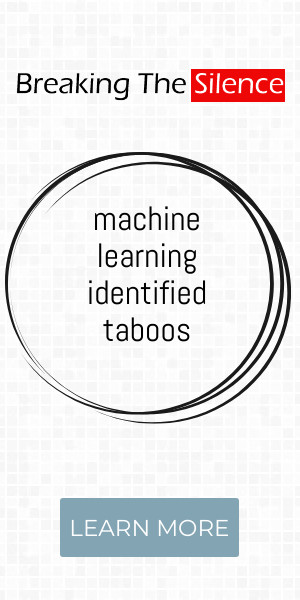While the church became a welcome space for her to express her heritage, the community didn’t necessarily prove a comfortable area to talk about sex, let alone assault.
It stood in stark contrast to the film industry, where sexual assault was rampant and sex wasn’t a taboo topic, she said.
«It’s a big jump to talk about sexual assault and being forced, sexual interaction being forced upon you. There’s levels of taboo, if you’re not even talking about sex between married people».
«These churches, Asian immigrant spaces, can function like a double-edged sword and they can be used to empower their community, and they can also be used to disempower their community,» Kim told NBC News.
Oftentimes, Asian Christian churches in the West serve not only as places of worship, but also crucial social networks for immigrants who feel racially marginalized or may have difficulty finding a welcoming community in «a white-dominant country,» she said.
For women, the churches can serve as more intimate settings to go to for advice or share stories among other women with a similar cultural background.
As important as they are for many immigrant women, and immigrants more generally, many of these Asian churches are led by predominantly male clergy.
Kim, who underscored that there are churches that are exceptions to this, adds that much of the preaching assumes that sexual encounters will be positive, avoiding the «underside of the male-female dynamic» like domestic violence, marital rape, and sexual violence more generally.
When women do attempt to seek help, they may try to look to clergy first but because many of these churches’ clergy members are male, they often feel barriers to reporting incidents.
Many immigrant churches also preach the idea of gender complementarianism, the idea that God sees men and women as equals; however the two genders occupy different roles, in turn reinforcing the concept of «a submissive love and not just love,» Kim said.

In addition, because of the ethnic immigrant makeup of these churches, many of members might struggle with «airing their dirty laundry» while they’re already marginalized in white communities.
Ultimately, as Chiu says, «climbing through those layers of taboo as a young person seems insurmountable».
If immigrant churches and second-generation churches could teach gender equality in sexual relationships and sexual encounters, «our world would be a different place,» Kim believes.
But then, in a country like the Dominican Republic, you also had the church‘s influence dictating how people — particularly women — should live their lives.
The church and the state are pretty much one entity — there’s no real separation.
They vilify sex, making it seem like the ultimate sin when done outside of the «sacred bond of marriage.» They limit access to information to vulnerable people, the ones who only have access to a church in their community, and as a result, we have a teenage pregnancy crisis.
Pope Francis and the Catholic Church have doubled down on their opposition to nuclear weapons.
The Catholic Church uses its three I’s on nuclear disarmament issues as part of its «Resurrection Politics,» an effort to revive issues once considered moribund, and restore them to the international agenda.
The church is working to change nuclear weapons policy and the normative framework by which nuclear weapons are judged, to strengthen the nuclear taboo at a time when it is undermined.
Pope Francis called for placing the church’s opposition to nuclear weapons into the catechism, a teaching document of the church.
«The use of nuclear weapons is immoral, which is why it must be added to the catechism of the Catholic Church. Not only their use, but also possessing them: because an accident or the madness of some government leader, one person’s madness can destroy humanity.»4
In Hiroshima and Nagasaki, the pope reaffirmed the church’s long-standing position calling for deeper disarmament, nonproliferation, and a ban against nuclear weapons.
The church’s concern with these issues is not new.
The current church position is a return to the traditional Catholic position since the advent of the atomic age, favoring nuclear disarmament.
Deeper disarmament requires building deeper relationships and dialogue, and the church understands this will take time.
The Church as Bridge Builder
In addition to this vast array of civil society institutions, the Catholic Church has a state-based institutional lane, the world’s oldest diplomatic corps , and diplomatic relations with 183 states, as well as a diplomatic presence at intergovernmental organizations such as the United Nations.
Yet, religious demographics mean that the Catholic Church is the only religious actor to have some presence in all nine nuclear-armed states, as well as the non-nuclear-weapon states, and it has extensive civil society and governmental-level networks.
The Catholic Church has the population size of China but dispersed, with communities in every part of the world.
At a time of increasing political polarization, domestically and internationally, the Catholic Church has much-needed institutional capacities that can be used to build bridges among nuclear-weapon and non-nuclear-weapon states, civil society and governments, science and religion, conservatives and progressives, and older and younger generations.
For example, Rose Gottemoeller, former deputy secretary general of NATO, and others praised the Catholic Church’s advocacy, particularly in reaching critical Republican swing senators, to ratify the New Strategic Arms Reduction Treaty in December 2010.
The church has the capacity to facilitate dialogue between U.S.
For example, Pope John XXIII’s prepared the encyclical «Peace on Earth,» which guided the modern Catholic Church’s work on peace and justice, and Pope Francis circulated the encyclical «Laudato Si: On Care for Our Common Home ,» stressing a positive peace among peoples, God, and the planet and future generations, integral human development.
Catholic theology and practice on a just peace has been expanding in recent decades, drawing from peacebuilding work of Jesus and building on the lessons the church has learned in peacebuilding around the world, from Northern Ireland to the Philippines.
The church’s work on nuclear disarmament is animated by this vocation to build a more just and sustainable peace.
As the nuclear taboo erodes, this breadth is important, reaching into the military.
Pope Francis’ urgent statements about the immorality of nuclear weapons, as well as the influence of the Catholic Church in supporting the TPNW, will likely help the TPNW reach the 50 states-parties needed for its entry into force.

The church’s work on the TPNW is the latest example of resurrection politics, taking issues thought previously «dead on arrival» and restoring them to the international agenda.
The coalition includes doctors, scientists, scholars, health care providers, the Catholic Church and other religious actors, nongovernmental organizations concerned with victims, and often retired military and government officials.
The Catholic Church and religious actors practice solidarity with the poor and vulnerable, raising the moral questions and our obligations to protect life and help the vulnerable.
Although many in the arms control community take issue with the TPNW and voice concerns that it may undermine existing arms control and nonproliferation treaties, the Catholic Church does not see these as choices but as complementary and mutually reinforcing.
The church works to build a pincer movement, of external and internal pressures to advance nuclear disarmament and reduce the dangers of nuclear weapons.
The policy call to action by the Catholic Church for nuclear disarmament and arms control are in many ways the same song, but heard in a different key of greater urgency to the issues.
The deterioration of the nuclear taboo and the international arms control framework, the rise of new and less stable threats, and the return of the nuclear arms race gives greater urgency.
The Catholic Church has long called for integral disarmament, seeing deep connections with development and environmental protection.
The Catholic Church advocates for extending New START, strengthening the NPT, bringing the Comprehensive Test Ban Treaty into force, deep nuclear disarmament, banning nuclear weapons, safeguarding nuclear materials, the humanitarian arms control agenda, reducing the reliance and expenditures on nuclear weapons, action on climate change and environmental protection, and strengthening international law and institutions in order to advance structures of cooperation.
The Catholic Church has also warned against policies that «normalize» nuclear weapons or use, such as nuclear brinkmanship, policies that envision nuclear use or seek to make nuclear weapons more usable, nuclear weapons modernization programs, and policies that protect weapons but not people.
Nina Tanenwald likewise argues we are witnessing an undermining of the nuclear taboo.
See Nina Tanenwald, «The Legacy of the Nuclear Taboo in the Twenty-First Century,» in The Age of Hiroshima, ed.
Religious institutions, including the Catholic Church, are not immune from sexual abuse cases involving leaders or those at the top of the hierarchy.
Last week The Jakarta Post published a series of articles addressing the issue of sexual abuse within the Catholic Church, which many may perceive as a «taboo» as it could undermine the Church’s authority.
Our recent tandem effort followed a report published by a West Jakarta parish magazine last December about 56 cases of alleged sexual abuse within the Church community.
The Vatican under Pope Francis, for example, has repeatedly asserted zero tolerance of the crime and ordered in May 2019 all church officials to establish protocols to protect minors and vulnerable adults.
One and perhaps the biggest barrier is the apparent denial of the cases, which will only generate suspicion about cover-up attempts by the Church.
Actually, there is no doubt about the Church’s commitment to transparency as evident when Indonesian Bishops Conference seminary commission secretary Father Joseph Kristanto spoke in a public forum about 56 alleged sexual abuse cases within the Indonesian Catholic Church.
But the fact that he was found guilty of a «code of ethics violation» and has apologized for the disclosure, as stated by KWI chairman Ignatius Cardinal Suharyo, reveals that the Church is not ready yet to break the long-held taboo.
Read also: Catholic Church excludes adult women in talks about protecting sexual abuse victims
The Church now has to find a mechanism for victims to report without any fear.
The ongoing police investigation into sexual abuse cases in the Church in Depok, West Java, although not involving a clergyman, should set the precedent for a fair and just settlement of a decades-old scandal that continues to plague the Church. ‘We Must Play Our Own Role, One Of Which Is Use Of Face Mask And Adhering To Other Measures Against COVID-19’
So, the questions are: What is wrong in wearing face mask to church? Does face mask disturb genuine worship in any way? What is the stand of Islam on wearing of face shields? CHRIS IREKAMBA reports.
‘We Should Wear Face Mask To Church To Fulfil All Righteousness’
TO address this question of wearing face mask to the Church for worship, I will respond to it by asking this question: What would Jesus have done, if He was asked the same question or if He were to be a Church leader in our day? There are two scriptural references that would help in this regard.
For instance, the Bible says, «Then cometh Jesus from Galilee to Jordan unto John, to be baptised of him. But John forbade him, saying, I have need to be baptised of thee, and cometh thou to me? And Jesus answering said unto him, suffer it to be so now: for thus it becometh us to fulfil all Righteousness. So, my view is that the Church should comply to fulfil all righteousness. Jesus got baptised, not because it was needful of Him to do it. He did it to fulfil all righteousness. We do not need to wear any face mask to Church, but we should do it to fulfil all righteousness.
‘Wearing Of Mask To Church Has Nothing To Do With The Veil’
And, therefore, to transpose that to people wearing mask to church to mean that it is reintroduction of the veil, I cannot understand that really.
I would, rather, advise such a person to either tell their members not to come to church at all, or else they allow them to wear the mask to avoid being infected by those who have it.
It’s either they tell their members not to come at all or they allow the people to protect themselves and protect others, because the veil that was torn in the temple has absolutely nothing to do with people wearing mask to church.
Del Vecchio, who has four children, has always believed in the Catholic Church’s indisputable teachings on birth control: Sex should only be between a man and a woman, and only under conditions that leave the woman «open to the possibility of conception.» That means elective hysterectomies on the basis of pain alone, not life-or-death situations, were a sin.
She searched in vain for a physician in a Catholic hospital in Florence who would perform what was a voluntary procedure that defied church teaching.
Last week, Cardinal Luis Ladaria, the Vatican’s doctrine chief, confirmed in a letter that after studying several medical cases presented by Catholic doctors, it was no longer against church teaching to have a hysterectomy in most cases and that the procedure could be done in «extreme cases» that do not just hinge on life and death.
In his statement, Ladaria referred to a case the church’s doctrine arm studied: «The uterus is found to be irreversibly in such a state that it is no longer suitable for procreation and medical experts have reached the certainty that an eventual pregnancy will bring about a spontaneous abortion before the fetus is able to arrive at a viable state».
In this case, according to the church, a hysterectomy is still considered «illicit» because even though the woman many not be able to safely carry a pregnancy to term, removal of the uterus is seen as direct sterilization; God could intervene to save the pregnancy.
«These fall into the moral category of direct sterilization which in the Congregation of the Doctrine of the Faith’s document Quaecumque Sterilizatio is defined as an action ‘whose sole, immediate effect is to render the generative faculty incapable of procreation’,» the church letter goes on.
«It is absolutely forbidden… according to the teaching of the Church, even when it is motivated by a subjectively right intention of curing or preventing a physical or psychological ill-effect which is foreseen or feared as a result of pregnancy,» the letter states.
Around 70,000 are performed every year, most in Catholic hospitals, and a recent study commissioned by Italy‘s health ministry showed that less than 18 percent are due to cancer, which would garner the church’s approval.
The Congregation for the Doctrine of the Faith said it took on the matter to clarify church teaching.

The fact that she actually had a potential life-threatening condition meant that church teaching did not, in fact, prohibit the procedure.
«Defying the church sort of saved my life.»Christians arent immune to depression and suicide.
Despite that, mental illness is not something the church usually talks about.
However, many times people in the church dont reach out because they are afraid that they will not be seen as true believers and will be stigmatised by other church members or church leaders.
Ms Wellman, who has 15 years experience in the field, said the subject is taboo in every church denomination.
She was pleasantly surprised when invited to talk about mental health at two Seventh-day Adventist churches last year.
I wanted people to understand that, even in the church, it is important to ask that uncomfortable question on whether someone is thinking about suicide.
Oftentimes we forget that the church is for the sick and suffering, and not for those that have been healed and whom are perfect.
I believe that God has placed members in our churches/faith community with gifts and talents to assist those in our community with the face-to-face approach, so it is important to have a greater understanding of a biopsychosocial approach to life in our faith community, she said.
The better equipped our church leaders and members are in recognising their feelings, being able to reach out for help, and offering support and guidance, the more our church members will feel comfortable in understanding that going through these battles are part of a journey and not the end of our Christian walk.
She would like to see churches talk more openly about mental health.
It can be a church member, a family member, or a friend.
Reynolds is a member of the Church of Jesus Christ of Latter-day Saints.
Well enough, in fact, to take a needed stand against the Church’s stifling conformities on its LGBTQ members.
The connection between this statistic and the LDS Church is not readily apparent to the outside eye — something that Reynolds is working to change.
The Church is clear in the matter: they do not condone same-sex marriage, but do «distinguish between same-sex attraction and homosexual behavior.» In short, if you are a member of the Church, you can be gay, but you cannot act on it.
Programs of the Church encourage those who are gay to hide their identity and to conform to a second life theory in which they marry and start a family in the way that they feel God deems it, but they are allowed to be gay on the inside.
He is still a member of the Church himself because he knows how compassionate its members are.
He wants to bring awareness to the way that the Church brushes gay people under the rug.
He does not consider members of the Church to be bigots, but the lack of education on LGBTQ issues in Utah is contributing to statistics which Utahns should be concerned about.
In November 2015, the Church announced that children of same-sex couples cannot be baptized into the Church until and unless they denounce same-sex marriage at 18 years old.
This was a watershed moment for LGBTQ members, a final definite line drawn by the Church.
Shortly after, Neon Trees singer Tyler Glenn was so devastated he decided to leave the Church.
The festival in 2017 raised over $1 million in proceeds, and in 2017, the Church issued a statement supporting Reynolds’ efforts: «We applaud the LoveLoud Festival for LGBT youth’s aim to bring people together to address teen safety and to express respect and love for all of God’s children.» Last year, the 2018 LoveLoud fest was held at the University of Utah’s Rice Eccles Stadium.
The LDS Church has yet to make a definitive proclamation about accepting LGBTQ people.
@palak_jayswalPope Francis gathers bishops from around the world at the Vatican this week for a hotly-awaited summit on tackling the wave of child sex abuse scandals assailing the Catholic Church.
The conference aims to be an opportunity to improve awareness of the global phenomenon of sexual abuse of minors within the Church, despite many in Africa, Asia and the Middle East being in denial of what they call «a Western problem».
In many parts of the world, discussing violence towards children and even sex is taboo, leading the Vatican to organize this week’s «educational» gathering.
«The Catholic Church has been faced with this problem for the last 35 years,» he said, hailing rigorous preventative measures taken in Australia, Britain, Canada, Ireland and the United States.
«The credibility of the Church is at stake,» he said.
«We want this meeting to result in concrete measures,» he said, echoing victims’ hopes for the conference, being held in the wake of paedophile scandals that have shaken the Church particularly in Chile and in the United States.
That reflects the Church’s centuries-old instinct to protect its image, he said.
«By resolving the problem within the Church, through becoming aware, we will contribute to resolving it within society, within families, where the shame means everything is hidden,» Francis said.
While the Catholic Church says it is trying to address the problem, other churches are also affected.
The text of this article was generated by the Breaking The Silence system that collected 9 news articles posted on the web from January 2019 to September 2020 and clustered for the taboo subjects related to churches














































































